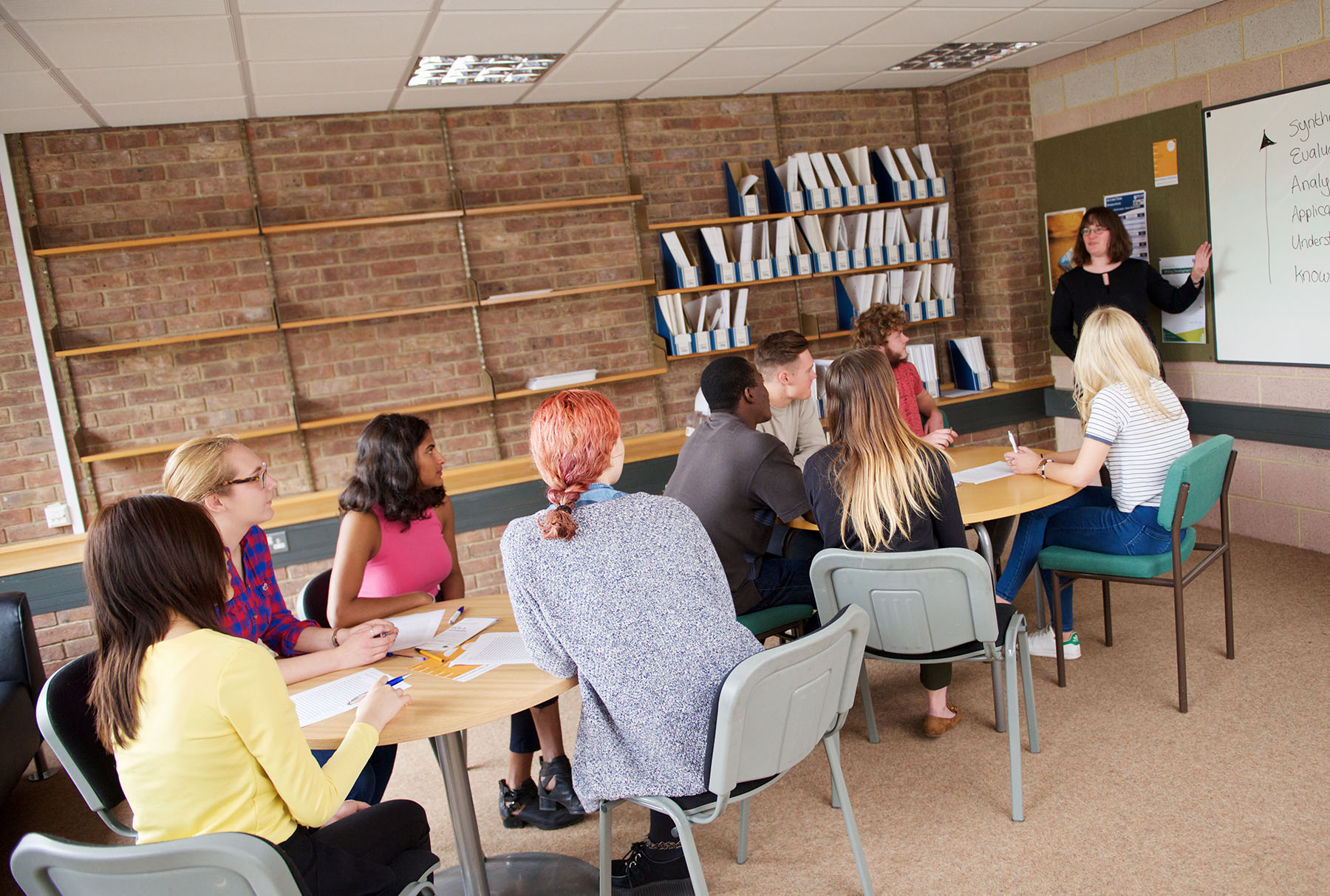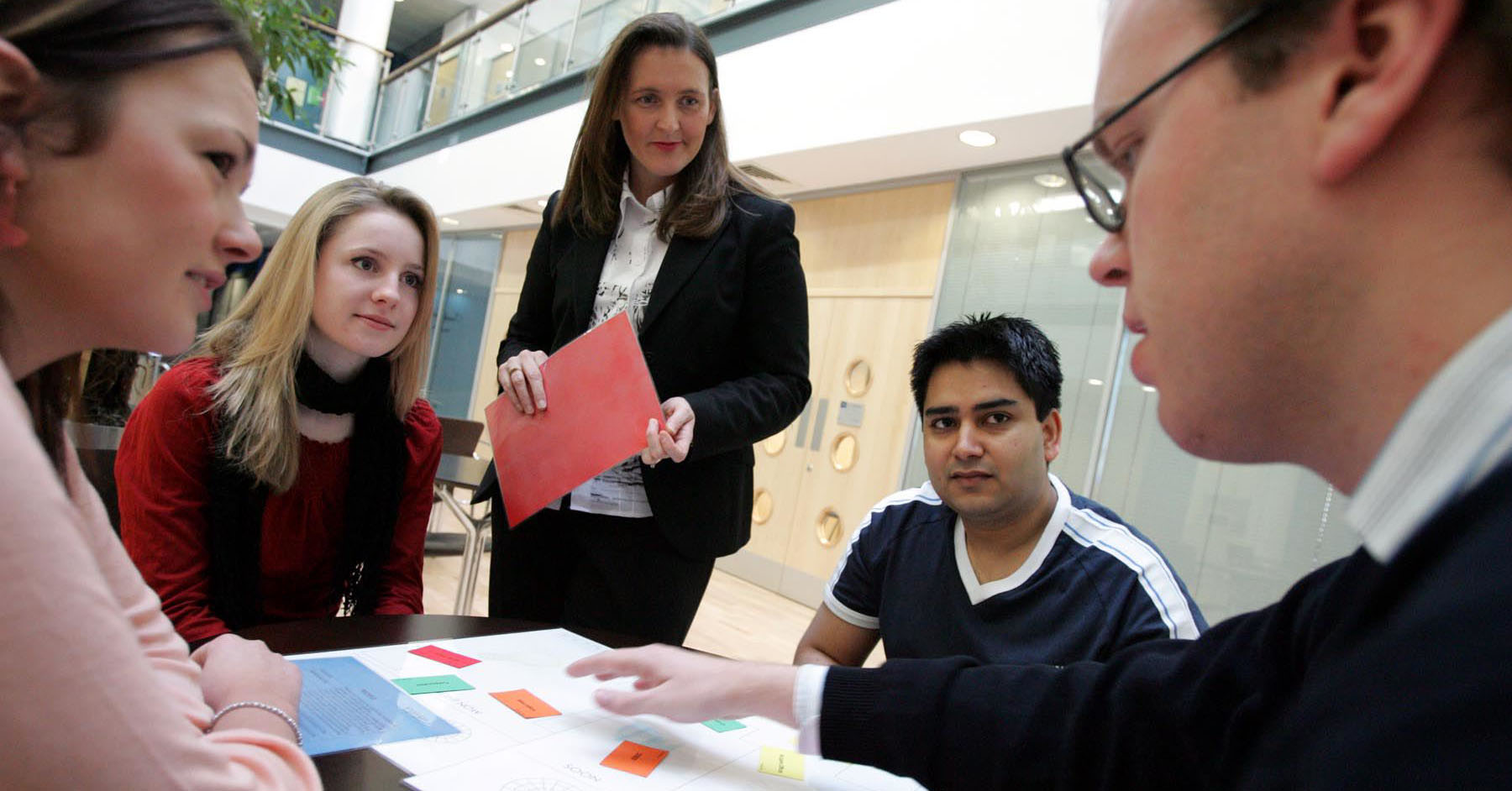Digital Education
NEW: A vision for education and skills at Newcastle University: Education for Life 2030+
Digital Learning
Digital learning is a core aspect of the campus-based student experience, designed to enhance and augment traditional learning through various tools and technologies. Key components include:
-
Embedding digital activities into on-campus teaching delivery
-
Digital resources: Lecture slides, handbooks, and other teaching materials available digitally. Our Virtual Learning Environment (Canvas) hosts resources and facilitates student connections. The materials could be in a variety of formats, e.g. video or audio recordings (e.g., explanations, feedback); contextual materials such as articles, news clips, songs, or poems; tests and quizzes for self-assessment; discussion boards; online databases and eBooks; simulations to provide interactive learning experiences.
-
Support for learning processes, where digital tools are used for assessment and feedback, group work and collaboration, reflection and communication, and curation of learning materials.
-
Personalisation of learning: students can access additional resources tailored to their needs and engage with content in ways that suit their learning preferences.

Digital learning encompasses a wide variety of learning models and approaches, digital technologies, and services. In essence, a teacher engages digitally with a learner in the context of a pedagogic framework.
Digital Skills and Capabilities
What makes an effective blend of in-person and online student activity will vary from course to course and will be influenced by your preferred pedagogical approaches and the expectations and norms of your discipline.
The development of students’ digital skills and capabilities is, in itself, an important part of our Graduate Framework and will be woven through our curricula. "Digitally capable" is one of it’s 12 attributes:
"being digitally capable is about being able to learn, work and live in our increasingly digital society".
To find out more about our centrally supported digital learning tools, see our Digital Technology Guides. Also, do talk to colleagues in LTDS / FMS TEL to discuss ideas on incorporating digital tools to create engaging learning.
Blended Learning
A blended approach to education combines traditional face-to-face learning with online content and engaging digital activities. However, with so many digital technologies available to you, it can be challenging to find the right approach. The tips below are designed to get you started and were inspired by the Jisc Digital Pedagogy Toolkit.
Carefully plan your approach
Blended learning seeks to combine the best elements of traditional face-to-face teaching with the best elements of digital education and online content. A well-developed blended offering can enhance the student learning experience, improve student outcomes, widen participation, and improve accessibility and inclusion (Jisc, 2020).
Naturally there's no one-size-fits-all approach to successful blended learning at Newcastle University, but there are a number of considerations that can help inform your practice:
- Blended online content and activities can occur before, during or after in-person sessions. Content is usually stored on the VLE and thought must be given to how, when, and why students access it.
- Digital content needs more than slide decks, lecture notes and ReCap in-venue recordings. It needs to be quality, well-designed content created specifically for a blended experience.
- Online content can take any form you like, from video, audio and animation through to interactive quizzes and simple on-screen text. A mix of media types is recommended to keep your content fresh and engaging.
- Video is often an important part of the blended experience, but it's a fairly passive medium. Consider activities that encourage learners to think, engage with their peers, and construct their own meaning around subject information.
- When you do use video, don't fall into the trap of thinking it needs to be Hollywood quality. Needless fancy graphics often get in the way of effective learning. Instead, keep videos short, simple, and to the point.
- Simple talking head videos and narrated presentations are fine, but don't overdo them, and be sure to consider our useful recording guidance tips before you start.
- The digital components of a blended experience aren't limited to replacing lecture materials; think about how digital pre- and post-work can enhance your seminars, field work, and labs.
- Online activities should enable students to work at their own pace before and after scheduled in-person sessions. Use them as an opportunity to stimulate interest before a session and reinforce key learning afterwards.
- Blended activities shouldn't be busy work. They are an invaluable opportunity to enhance, complement and extend on-campus activity - giving students more time to focus on a particular task and develop valuable skills. If they don't have a clear reason for being there, don't include them.
- Although it's tempting, you don't always have to create all of your digital material from scratch yourself. There's a lot of free material out there already, but watch out for copyright restrictions on their use.
Not sure where to begin? In the short term, start small and consider moving the topics that your students struggle with most online, to allow them time to revisit tricky or important threshold concepts. Just be careful not to move content online for the sake of it; too much digital information can be overwhelming and rarely leads to an engaging experience.
Want to take your blended approach to the next level? Ready to think about redesigning your delivery methods and translating your established teaching techniques into a truly blended experience? Our ABC Blended Module Design Canvas course can help get you started.
Get to grips with the tools available to you
Once you've decided what you want your students to do online, you need to work out which digital tools and techniques will help them achieve it. To do that, you'll need to know what platforms and services are available to you at Newcastle University - and moreover, how they support effective digital education.
Start by exploring the Digital Technologies section of this site. There you'll find a comprehensive list of the main technologies supported by the University, along with guidance and best-practice advice on how to use them effectively. For example, you might want to use:
- Office 365 apps and Teams to share files and enable collaborative content creation
- ReCap to create engaging video content
- NU Reflect to encourage personal, professional and academic reflection
- Numbas to create interactive maths questions
- H5P to develop engaging interactive content and educational games
With most bases covered, you’ll find there's very rarely a need to use (or pay for) a third-party tool. And if you’re still unsure where to start, LTDS, FMS-TEL and NUIT offer a range of training sessions and online webinars to build your confidence with supported technologies and hopefully encourage you to explore and experiment with new ways of delivery.
A word of warning: use digital tools wisely and always have a sound reason for using a particular technology. Place learning objectives first and identify tools to help you and your students achieve them, as unnecessary use of digital can often be counter-productive to effective learning.
Enrich your online content
Digital resources and technologies allow us to rethink the traditional lecture, seminar, and lab mindset, and design learning experiences in more flexible and manageable ways. But those experiences are only useful if students engage with them, and to do that, you need to make your content interesting and engaging. Students are more than capable of working through a lot of material, but reading online is not like reading a book, and pages and pages of dense text can be difficult to consume.
Enriching your blended content with appropriate images, audio and video can add variety and impact to your content and help keep students engaged. But don't add irrelevant content for the sake of it; elements should contribute to student learning and help reinforce text-based content. Timely use of interactive quizzes and knowledge checks are also a good idea, which built-in Canvas quizzes and the H5P content creation tool are ideal for.
Handy with HTML? By copying and pasting a few lines of code, you can easily create pull quotes, concertinas, tabbed boxes, and more. These will really make your pages pop, giving them a professional design that both looks good and helps keep students engaged. Take a look at our introductory Canvas HTML page to see these components in action, and copy the code for use in your own courses.
Finally, always try to be mindful of students who may struggle to access online materials. Not everyone has a powerful device or fast access to the internet at home, and some may find working remotely a struggle (especially after the pandemic). Try to keep videos short, and host them on streaming services with adaptive playback quality such as ReCap or Stream (rather than upload directly to Canvas).
Get your students involved
Effective blended learning emphasises active participation over simple consumption of static content. Popular forms of online material such as video, pictures and text are all excellent for basic transmission of facts, but for higher-order thinking skills to be developed, you need to build in opportunities for students to engage with one another. We have a dedicated page on Learning Communities that explores ways to engage students virtually and create social engagement online.
Although students will frequently interact in person and work well in friendship groups, avoid assuming they will automatically be active in an online community or know what to do and how to behave professionally. Carefully scaffold activities and make it explicit what students need to do and how. Also, to avoid adding unnecessary barriers to interaction, try to keep to using technologies already supported by the university that students will be familiar and comfortable with (such as Microsoft Teams and Canvas discussion boards).
Many blended learning approaches are also complemented by having 'backchannels' where learners can collaborate informally outside of contact time, whether it’s sharing ideas formally via Microsoft Teams or Canvas, or peer networking in ad-hoc social spaces using their own devices. Try to encourage this form of informal discussion wherever possible, as the social connections, friendships and support structures created are extremely important from an academic, social, and mental health point of view.
Finally, in broader terms of participation, it's also a good idea to involve your students in all aspects of developing your blended learning approach. This will provide you with the reassurance that your design actually works, and that your content speaks to your students and genuinely meets their needs.
Make your content accessible
It's always easier to design your digital content with accessibility in mind from the start, rather than tack on accessibility after the event. Our digital accessibility guidance can help you ensure your blended learning resources and experiences are as accessible as possible.
Support
Putting blended learning into practice requires you to strategically plan the student journey through a module or programme – both online and off. You also need to make informed choices about the technology you use to underpin your teaching so that it meets the learning outcomes of the course. Our Case Study Database offers a range of ideas and inspiration to get you started.
Alternatively, talk to colleagues in LTDS / FMS TEL to discuss ideas on designing and implementing an effective blended approach across your own modules and programmes.



